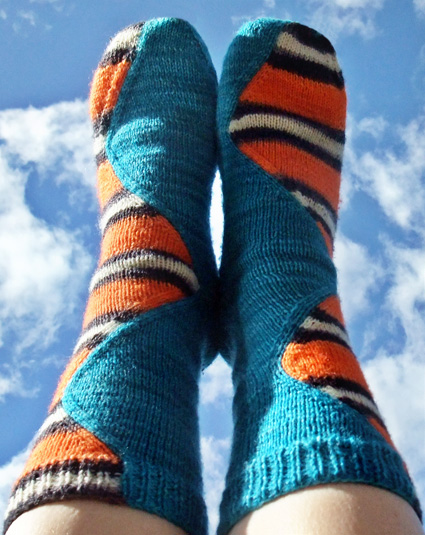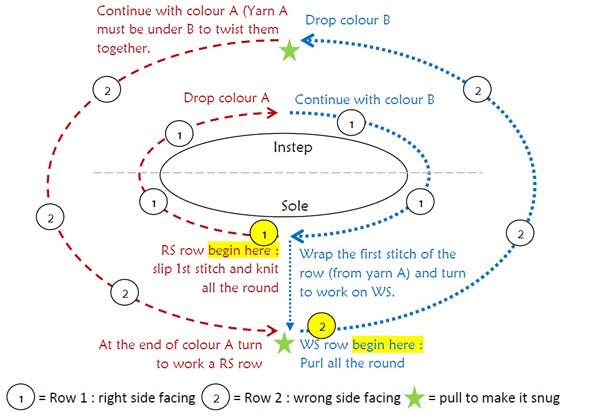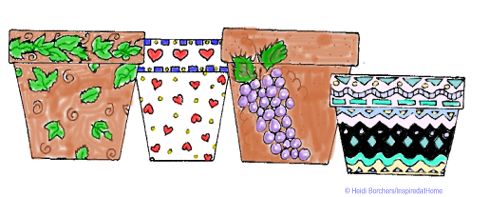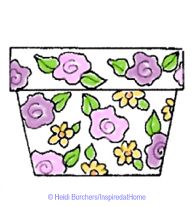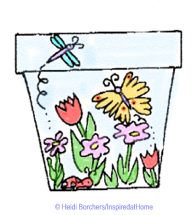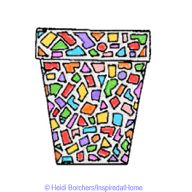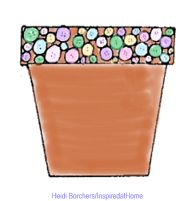Taken from
Striped, solid, or spotted socks like these will keep your legs warm whatever the weather.
These very tall socks are knit in affordable acrylic, but if you've got a stash of wool in a similar gauge, go right ahead!
Do wear them with garters. It's the thing.
Let winter do its worst -- you can keep your skirts!
| SIZE |
| One size fits thighs 17 - 24 inches around |
| FINISHED MEASUREMENTS |
| Top circumference: 16 inches Length: 30 inches |
MATERIALS
|
color: #289 Copper Note: less than one half of each skein was used for the socks shown |
| GAUGE |
20 sts/36 rows = 4" in stockinette stitch
|
| STITCH PATTERN |
| 1x1 Rib (worked over an even number of sts): Round 1: [K1, p1] around. This round forms 1x1 rib. |
| PATTERN NOTES |
| [Knitty's list of standard abbreviations can be found here] If you wish to make the top of the sock larger in circumference, CO more sts and work one extra pair of decreases for every 2 extra sts. Every 5 extra sts will add an inch to the circumference (though it is advisable to add even numbers of sts so that decreases will remain symmetrical). In the stockings shown, I used each color for 15 rows (black, red, purple, orange, green, gray). Stripes are a great way to use up half skeins of yarn leftover from other projects -- make up your own stripe patterns! I've left the color changes out of the pattern to make it less confusing. |
| DIRECTIONS |
| Sock (Make 2)CO 90 sts, and distribute as follows over 4 needles: 23 sts on first and fourth needles, 22 sts on second and third needles. Place marker and join to begin working in the round, being careful not to twist.The point at which the join happens will be the center back of the sock.Work in 1x1 rib for 15 rounds.IMPORTANT NOTE: Rows (rounds) will be counted from this point.
Work in stockinette st for 92 rounds.
Set-up Rnd: K22, place marker, k46, place marker, k22. Shaping Rnd: K to 2 sts before first marker, k2tog, k to second marker, slip marker, k2tog, k to end of round. [Work 3 rnds even. Work Shaping Round.] 3 times. 82 sts rem. (Rnd 106 just worked.) Work 38 rnds even. (Round 144 just worked.) [Work Shaping Rnd. Work 1 round even.] 13 times. 56 sts rem. (Rnd 170 just worked.) Work Shaping Rnd once more. 54 sts rem. Work 68 rounds even. (Rnd 239 just worked.)
Shape footPlace first 14 and last 13 sts of round onto one dpn: the heel flap wil be worked on these 27 sts. Place rem 27 sts on a st holder or piece of waste yarn.
Work Short-Row Heel ShapingRow 1 [WS]: P15, p2tog, p1, turn.Work in stockinette st until heel flap measures 2.5 inches, ending with a RS row. Row 2 [RS]: Sl1 kwise, k5, k2tog, k1, turn. Row 3 [WS]: Sl1 pwise, p6, p2tog, p1, turn. Row 4 [RS]: Sl1 kwise, k7, k2tog, k1, turn. Row 5 [WS]: Sl1 pwise, p8, p2tog, turn. Row 6 [RS]: Sl1 kwise, k9, k2tog, k1, turn. Row 7 [WS]: Sl1 pwise, p10, p2tog, turn. Row 8 [RS]: Sl1 kwise, k11, k2tog, turn. Row 9 [WS]: Sl 1 pwise, p12, p2tog, turn. Row 10 [RS]: Sl1 kwise, k13, k2tog, turn. Row 11 [WS]: Sl1 pwise, p14, p2tog. 16 sts rem. Turn work so RS is facing. Pick up and k 15 sts along left side of heel flap. Using a second dpn, work across 27 sts on front of foot. Using a third dpn, pick up and k 15 sts along rem side of heel flap, and k 8 sts from heel flap. (Sts should now be distributed as follows: 23 sts on first and third needles, 27 sts on second needle. 73 sts. NOTE: Foot will be worked using four needles instead of five.)
Shape InstepRnd 1: K to last 3 sts on first needle, k2tog, k1, k across all sts on second needle, k first st on third needle, k2tog, k to end.
Rnd 2: K all sts. Work these 2 rnds 8 times more. 55 sts rem. Next Rnd: K to last 3 sts on first needle, k2tog, k1, k all sts on second and third needles. 54 sts. (13 sts on first needle, 27 sts on second needle, 14 sts on third needle.) Work even until work from base of heel measures 3 inches less than total length of foot.
Shape ToeNext Rnd: K to last 3 sts of first needle, k2tog, k1, k first st of second needle, k2tog, k to last 3 sts of second needle, k2tog, k1, k first st of third needle, k2tog, k to end.
Next Rnd: K all sts. Work these 2 rnds 5 times more. 30 sts rem. Work first rnd only, 4 times. 14 sts rem. Work sts on first needle only then break yarn, leaving a 12 inch tail. Transfer sts on third needle to first needle: 7 sts on first needle and 7 sts on second needle. Using Kitchener stitch, graft sts on first needle to sts on second needle. |
| FINISHING |
Weave in all ends.
|
| ABOUT THE DESIGNER |
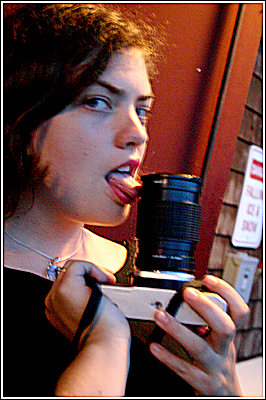 She is an avid knitter, photographer, and a cunning linguist. |

